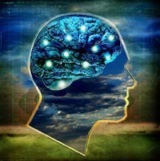A BRIDGE WAS BUILT. Imaginify attended a dialogue hosted by the
Stanford School of Medicine [4] between
His Holiness the Dalai Lama [5], neuroscientists and Buddhist scholars at Stanford University on November 5, 2005.
 FREE STREAMING VIDEO NOW AVAILABLE...dalialama.stanford.edu [6]
"A Dialogue between Buddhism and Neuroscience on the Potential for Common Understanding and the Alleviation of Suffering."
FREE STREAMING VIDEO NOW AVAILABLE...dalialama.stanford.edu [6]
"A Dialogue between Buddhism and Neuroscience on the Potential for Common Understanding and the Alleviation of Suffering."
Morning Session :
Craving and Choice [7] [video]
Memorial Church, Stanford University
"Craving, Suffering and Choice: Spiritual and Scientific Explorations of Human Experience"
Afternoon Session :
Suffering and Choice [8] [video]
Memorial Church, Stanford University
According to neuroscience, brain defines mind. What we think and feel, our sense of who we are, how we respond to our world, our minds – all are manifestations of our brain. The next and perhaps ultimate frontier for human discovery is elucidating the workings of the nervous system – to understand the intricate weaving together of biological processes that extend from genes to circuits of interconnected cells to behavior. Although the journey of brain discovery poses formidable challenges, both conceptual and technological, the wealth of insights that will emerge more than justify the journey. Indeed, an unprecedented wealth of ideas awaits us. Through this journey we will know ourselves as never before – we will know ourselves for what we are.
Dalai Lama and neuroscientists build bridge between Buddhism and Western medicine
Page 1 [9] |
Page 2 [10]
Stanford University School of Medicine, 11/7/05
"In reference to a study published last year showing that the brains of experienced meditators have long-term changes in activity, the Dalai Lama said, "Now they are beginning to realize that our approach is something useful. I am extremely happy to see more and more science showing interest in our approach."...
Throughout the day, the participants defined the common ground: an emphasis on finding the truth, the need to rescue minds from "hijacking" and the goal of achieving transformation...
The concept of "choice" in determining decisions and feelings is one that both Western science and Tibetan Buddhism share, and it provides a foundation for continued inquiry....
"While this is still a beginning it offers guidance for new roads to travel."
- Philip Pizzo, MD, Stanford University School of Medicine Dean
TENZIN GYATSO, the XIV Dalai Lama, is the leader of Tibetan Buddhism, the head of the Tibetan government-in-exile, and a spiritual leader revered worldwide. He was born on July 6, 1935 in a small village called Taktser in northeastern Tibet. Born to a peasant family, he was recognized at the age of two, in accordance with Tibetan tradition, as the reincarnation of his predecessor, the XIIIth Dalai Lama. The Dalai Lamas are manifestations of the Buddha of Compassion, who choose to reincarnate for the purpose of serving human beings. Winner of the Nobel Prize for Peace in 1989, he is universally respected as a spokesman for the compassionate and peaceful resolution of human conflict.
He has traveled extensively, speaking on subjects including universal responsibility, love, compassion and kindness. Less well known is his intense personal interest in the sciences; he has said that if he were not a monk, he would have liked to be an engineer. As a youth in Lhasa it was he who was called on to fix broken machinery in the Potola Palace, be it a clock or a car. He has a vigorous interest in learning the newest developments in science, and brings to bear both a voice for the humanistic implications of the findings, and a high degree of intuitive methodological sophistication.
The Dalai Lama, who has become known worldwide for his advocacy of peace, tolerance and compassion, lives in exile in Dharamsala, India, where he serves as Tibet's religious and political leader and works to preserve the historical and cultural heritage of his people. In 1989, he was awarded the Nobel Peace Prize and was praised by the Nobel Committee for his opposition to the use of violence in the struggle to liberate Tibet.
The Dalai Lama is the author or co-author of numerous best-selling books about spirituality, meditation and peace, including
The Art of Happiness: A Handbook for Living, 1998; An Open Heart: Practicing Compassion in Everyday Life, 2001; and Healing Emotions: Conversations with the Dalai Lama on Mindfulness, Emotions, and Health, 1997
Stanford University School of Medicine Overall mission:
To be a premier research-intensive medical school that improves health through leadership and a collaborative approach to discovery and innovation in patient care, education and research.
Also, here is a great resource from
wisdomatwork [11] [
alt [12]].


 FREE STREAMING VIDEO NOW AVAILABLE...
FREE STREAMING VIDEO NOW AVAILABLE...